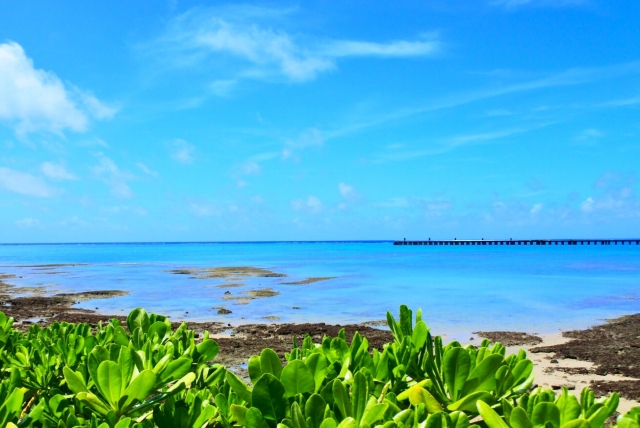長寿に関する研究は数多くありますが、その中でも注目されているのが「小太りの方が長生きする」という説と、「ブルーゾーン(Blue Zones)」のように少食・低肉食の生活習慣が長寿に結びつくという説。この2つ、まるで正反対のようにも見えます。
実は、この“矛盾”のような現象には、それぞれの研究設計の違いや、対象者の背景、評価の視点に大きな違いがあるのです。今回は、それぞれの研究の概要とその背景を読み解きながら、健康長寿の本質に迫ってみたいと思います。
「小太りの方が長生きする」って本当?
● 研究の概要
主に欧米で行われた疫学研究の中には、「BMIが正常範囲の上限〜過体重(25〜29)」の人のほうが、痩せている人よりも死亡率が低いという結果が報告されています。この現象は「肥満パラドックス(obesity paradox)」と呼ばれています。
とくに高齢者や、心疾患・糖尿病などの慢性疾患を持つ人において、「少し体格が良い」ほうが予後がよいという報告が複数あります。
● 背景にある研究の特徴
こうした研究の多くは観察研究であり、特定の病気を持つ患者さんや高齢者を対象にしています。交絡因子(例:喫煙歴や既往歴)をすべてコントロールするのは難しく、その結果の読み解き方には注意が必要です。
● なぜ「小太り」が有利になるのか?
- 病気による体重減少:もともと健康だったわけではなく、病気で痩せた人が高リスクとしてカウントされている可能性
- 筋肉量の影響:BMIでは筋肉と脂肪の区別がつかず、筋肉質の人も「小太り」と分類されることがある
- エネルギーの“備え”:高齢になると、栄養の蓄えが回復力の差に直結するケースもあります
一方のブルーゾーンでは、どうして長寿なのか?
● ブルーゾーンとは?
「ブルーゾーン」とは、世界の中でも特に100歳以上の高齢者が多い地域を指します。代表的な5地域はこちら:
- 沖縄(日本)
- イカリア島(ギリシャ)
- サルデーニャ島(イタリア)
- ニコヤ半島(コスタリカ)
- ロマリンダ(アメリカ・カリフォルニア州)
● 共通する長寿習慣
- 主に植物性の食生活(野菜、豆類、全粒穀物が中心)
- 肉は月に数回、魚も控えめ
- 腹八分目の習慣(カロリー制限)
- 加工食品を避ける
- 日常的な身体活動と、強い社会的つながり
- ストレスをうまくかわす生活の知恵
● 研究のアプローチの違い
ブルーゾーン研究は、個人ではなく地域全体の文化・環境・習慣を包括的に調査する観察研究です。そもそも病気の人が少なく、ライフスタイルが似ているため、交絡因子が少なく、分析もしやすいという特徴があります。
この2つの研究、なぜ正反対に見えるのか?
- 対象者の違い:
・「小太り研究」は高齢者や病気を持つ人が中心
・「ブルーゾーン研究」は健康な地域住民が対象 - 評価の視点の違い:
・小太り研究は「死亡率(死ぬか死なないか)」が指標
・ブルーゾーン研究は「健康寿命(元気で自立して生きる期間)」に注目 - BMIの限界:
・体脂肪と筋肉を区別できず、健康でも「小太り」とされるケースがある - 文化・遺伝・環境の違い:
・ブルーゾーンは遺伝・文化・自然環境が揃った“健康的な社会”
・小太り研究の多くは西洋型の高ストレス社会における「適応戦略」とも言える
結局、どっちを信じればいいのか?
どちらか一方が正しいというより、「誰にとって」「どのタイミングで」有効かがポイントです。
- 若年〜中年期:内臓脂肪や生活習慣病予防のために、体重管理が重要
- 高齢期:多少の脂肪や筋肉の余裕が、病気時の回復力につながることも
つまり大事なのは、自分の体質・年齢・生活スタイルに合った健康管理をすること。
「痩せていれば健康」「太っていれば不健康」という単純な考えではなく、長期的な視点と柔軟な判断が、健やかな人生につながるのです。
まとめ
- 長寿の研究結果には背景や前提の違いがある
- 小太りが有利なのは、主に高齢者や慢性疾患を持つ人の話
- ブルーゾーンは地域文化そのものが健康長寿の鍵になっている
- 一番大切なのは「その人に合った健康習慣」
“Slightly Overweight” vs. “Blue Zone Lifestyle”: Which One Really Leads to Longevity?
There are countless studies on longevity, but two theories in particular have gained attention:
1. The idea that slightly overweight people live longer
2. The “Blue Zones” theory, which links longevity to a lifestyle of small meals and minimal meat consumption
At first glance, these two perspectives seem completely contradictory. But in truth, this apparent conflict arises from differences in research design and context.
In this article, we’ll unpack the background behind both approaches and explore the deeper essence of healthy longevity.
Is it true that slightly overweight people live longer?
● Overview of the research
Several epidemiological studies—mostly from Western countries—have reported that people with a BMI in the upper normal to overweight range (25–29) have lower mortality rates than those who are thinner. This is known as the “obesity paradox.”
In particular, elderly individuals or those with chronic illnesses like heart disease or diabetes often show better health outcomes when they have a slightly larger body size.
● Key characteristics of the research
– Most of these are observational studies, focusing on older adults or patients with specific diseases.
– It’s difficult to fully eliminate confounding variables such as smoking history or pre-existing conditions, so the findings must be interpreted cautiously.
● Why might “slightly overweight” be beneficial?
– Weight loss due to illness may skew the data, making thinness a possible symptom rather than a sign of good health.
– BMI does not distinguish between fat and muscle, so muscular individuals may be labeled overweight.
– Energy reserves are particularly helpful for the elderly, aiding in recovery from illness or surgery.
What makes Blue Zone residents live longer?
● What are the Blue Zones?
“Blue Zones” are regions in the world with an unusually high number of centenarians. There are five well-known areas:
– Okinawa (Japan)
– Ikaria Island (Greece)
– Sardinia (Italy)
– Nicoya Peninsula (Costa Rica)
– Loma Linda (California, USA)
● Common longevity habits
– Plant-based diets rich in vegetables, legumes, and whole grains
– Meat consumption only a few times a month; limited fish intake
– Practice of “hara hachi bu”—stopping at 80% fullness
– Minimal processed foods
– Regular physical activity
– Strong social connections and community ties
– Mindful living and stress management
● Research approach differences
Studies on Blue Zones take a holistic, community-based approach, examining not just individuals but the shared environment and lifestyle of entire populations. Because there are fewer confounding variables in such healthy communities, the results are often more straightforward.
Why do these two theories appear contradictory?
● Differences in target populations
– “Slightly overweight” studies focus on the elderly and those with chronic illnesses.
– Blue Zone research focuses on healthy general populations.
● Differences in evaluation criteria
– The former uses mortality rate (whether a person dies or not).
– The latter emphasizes healthy life expectancy—how long people live independently and in good health.
● The limitations of BMI
Since BMI does not account for body composition, muscular and healthy individuals may be misclassified as overweight.
● Cultural, genetic, and environmental factors
– Blue Zones are naturally healthy environments where genes, culture, and nature align.
– Many studies on overweight individuals reflect adaptive responses to high-stress environments in the West.
So which should we believe?
Rather than choosing one over the other, it’s crucial to ask: “What works for whom, and when?”
– In youth and middle age: Weight management is vital for preventing visceral fat and lifestyle-related diseases.
– In old age: Having extra fat or muscle mass can improve resilience and recovery during illness.
In short, the idea that “thin = healthy” and “fat = unhealthy” is an oversimplification.
What really matters is taking a **long-term, flexible approach** that fits your **body type, age, and lifestyle.**
Summary
– Longevity research varies greatly in context and assumptions.
– Being slightly overweight may be helpful, especially for elderly or chronically ill individuals.
– In Blue Zones, shared lifestyle and culture are key to health and longevity.
– The most important thing is adopting health habits that are right for you.
Discover what works best for your unique body and lifestyle, and live each stage of life with vitality and joy.

